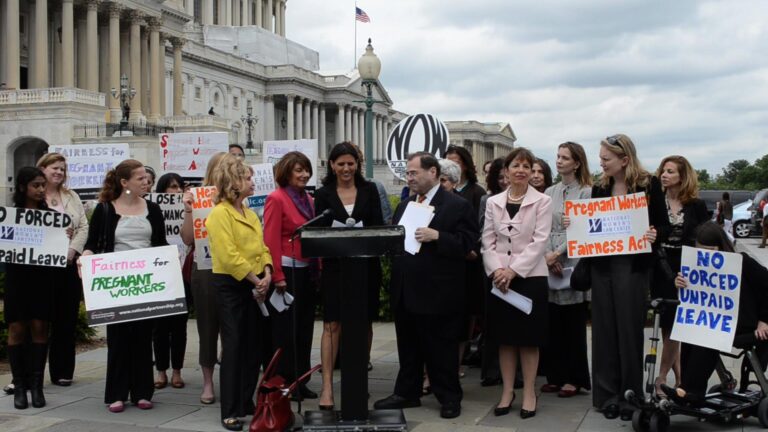
Miriam Li is a student at Harvard Law School and a member of the Labor and Employment Lab.
Earlier this year, Massachusetts legislators introduced a bill that would prohibit weight-based discrimination in the workplace. This type of legislation isn’t new—since the late 1990s, Massachusetts lawmakers have repeatedly proposed similar measures, but none has advanced to a vote. And because federal civil rights laws, including Title VII, still don’t prohibit weight discrimination, Massachusetts employers remain legally free to fire, refuse to hire, or pay employees less solely based on their weight.
Notably, even as other forms of workplace discrimination have declined, anti-fat bias has surged. (For more on why many advocates prefer using the word “fat,” see this helpful explanation.) More than 40% of Americans report experiencing weight-based stigma at some point in their lives, and studies consistently link higher body weight with lower wages, fewer hiring opportunities, and diminished career advancement. As a result, employees experiencing weight discrimination face wage penalties that compound over time as bias subtly influences countless career decisions. Moreover, because women of color are more likely to be classified under current medical standards as “overweight,” they disproportionately bear the burden of anti-fat bias, further compounding the gender- and race-based penalties they face in the workplace.
Massachusetts lawmakers aren’t alone in attempting to address this issue. Delaware recently introduced comprehensive legislation prohibiting discrimination based on weight, height, or body size in employment, housing, education, and public accommodations, while Alabama legislators have proposed laws allowing victims of weight discrimination to sue for damages. Other jurisdictions have already taken concrete steps: Michigan explicitly prohibited weight-based discrimination decades ago, Washington State extended protections via a landmark court decision in 2019, and in 2023, New York City amended its Human Rights Law (NYCHRL) to prohibit discrimination based on weight and height in employment, housing, and public accommodations. While NYC’s law includes very narrow exceptions for roles where body size is directly related to an employee’s performance of essential job duties, customer preferences or generalized assumptions about body size do not justify weight-based standards.
Harris v. City of New York—a recent New York Supreme Court decision— demonstrates the new law’s potential. The plaintiff, Angela Harris, sued after she passed the civil service exam to become an NYC probation officer, but was told to “leave and only return after losing 95 pounds” during a subsequent NYPD medical screening. In March 2025, the court denied the city’s motion to dismiss, explicitly rejecting its argument that its weight requirement was a neutral medical evaluation. Rather, the court held that a blanket 95-pound weight-loss directive—without any individualized assessment of Harris’s actual health or ability to perform the job—supports a claim of unlawful discrimination under the law, emphasizing NYC Commission on Human Rights guidance stating that: “[s]tereotypes or speculative health and safety concerns regarding body size stem from entrenched bias and do not constitute permissible justifications for height or weight discrimination.” The court also allowed Harris’s retaliation claim to move forward, finding it plausible that the city stopped processing her application because she filed a discrimination complaint.
While legal commentators have applauded the ruling as a victory against weight discrimination, Harris is just one of many cases around the country where plaintiffs have relied on state and local laws to challenge workplace bias. For example, in Lamoria v. Health Care & Retirement Corp. (1999), the Michigan Court of Appeals allowed Barbara Lamoria’s claim to proceed after her supervisor explicitly announced an intention to fire ‘overweight’ employees. The court held that weight need only be a “determining factor” in adverse employment decisions to be actionable under Michigan’s Elliott-Larsen Civil Rights Act (ELCRA).
Although some plaintiffs have tried to challenge workplace weight discrimination under the ADA, the ELCRA demonstrates how weight-specific statutes can offer remedies where the ADA falls short. For example, in Trapp v. FedEx (2022), a federal court allowed a plaintiff’s weight-discrimination claims under the ELCRA to proceed despite dismissing his ADA claim. In the suit, Anthony Trapp alleged that he requested a seatbelt extender to accommodate his weight, but FedEx denied the request and demoted him. When Trapp sued under both laws, the federal court found his ADA claim insufficient, concluding that his weight did not substantially limit a major life activity. Yet the court permitted his ELCRA claim to move forward, noting evidence, such as a supervisor explicitly texting Trapp that he’d have to “lose [sic] some weight” to regain his driving role and FedEx’s inconsistent explanations regarding seatbelt extender policies, that suggested the company’s rationale was pretextual.
Although some plaintiffs have found limited success under the ADA, recent optimism about revisiting the ADA as a primary avenue for combating weight discrimination is likely misplaced. As the court in Trapp emphasized, ADA standards require that employees demonstrate a medical impairment that substantially limits one or more major life activities, a record of such an impairment, or that they are regarded as having such an impairment. And despite Congress’s explicit efforts to broaden ADA protections through the 2008 ADA Amendments, federal circuit courts have repeatedly declined to extend protections to individuals facing weight discrimination. For example, in Morriss v. BNSF Railway Co. (8th Cir. 2016), the Eighth Circuit rejected an ADA claim brought by a plaintiff whose job offer was rescinded due to his high BMI, reasoning that “obesity is not a physical impairment unless it is a physiological disorder or condition and it affects a major body system.” Similarly, in Richardson v. Chicago Transit Authority (7th Cir. 2019), the Seventh Circuit upheld the dismissal of a bus driver’s ADA claims, concluding that he failed to show his “obesity [was] caused by an underlying physiological disorder or condition” and therefore did not qualify as disabled under the Act.
Notably, even as legal battles against weight discrimination continue, the rapid rise of GLP-1 inhibitors has sparked predictions that anti-fat bias may soon be a thing of the past. Recent headlines describe drugs like Ozempic as revolutionary, even forecasting the end of weight stigma altogether. But while Ozempic and other GLP-1 inhibitors have been widely hailed as miracle drugs, their emergence hasn’t resolved anti-fat bias—rather, GLP-1s have merely reframed it. As Rachel Pick observed in The Guardian in 2023, many of the recent gains of the body positivity movement were quickly overshadowed (and ultimately overtaken) by a new narrative about a miracle drug that presumed from the outset that fatness is the problem to solve, rather than our society’s obsession with weight loss and body conformity. “Ozempic has won,” Pick concluded, “body positivity has lost.”
Unfortunately, employer practices around Ozempic reflect this problematic reframing. According to a 2024 survey of large employers offering GLP-1 coverage, 24% required employees to meet with a dietitian or health coach before approving the medication, 8% mandated enrollment in a structured weight-loss program beforehand, and 10% required ongoing participation in a diet or exercise regimen while taking the drug. This troubling approach predates Ozempic: even before the rise of GLP-1s, many large employers tied insurance costs to weight loss, using financial incentives and penalties to push employees towards certain BMI targets. Indeed, the Affordable Care Act (ACA) allows employers to offer rewards of up to 30% of healthcare premium costs to encourage employees to participate in wellness programs. Thus, far from signaling the end of weight bias, employers’ intrusive responses to GLP-1 inhibitors remain anchored in the harmful assumption that fatness is a personal failing—something employees must “correct” through individual effort and self-discipline.
Ultimately, medicalizing fatness will not end weight discrimination. Only clear, explicit legal protections can meaningfully combat anti-fat bias at work, and without decisive legislative action, little will change. With the recent reintroduction of legislation to prohibit weight discrimination, Massachusetts lawmakers now have a critical opportunity to follow examples set by jurisdictions like New York City and Michigan by explicitly extending civil rights protections to workers of all body sizes. Passing this legislation would send a powerful message: workplace equality requires explicitly prohibiting anti-fat bias—not medicalizing or individualizing it. Only then can we ensure that all employees—regardless of race, gender, or body size—have a legal right to demand the respect and fair treatment that we each deserve in the workplace.










Daily News & Commentary
Start your day with our roundup of the latest labor developments. See all
December 22
Worker-friendly legislation enacted in New York; UW Professor wins free speech case; Trucking company ordered to pay $23 million to Teamsters.
December 21
Argentine unions march against labor law reform; WNBA players vote to authorize a strike; and the NLRB prepares to clear its backlog.
December 19
Labor law professors file an amici curiae and the NLRB regains quorum.
December 18
New Jersey adopts disparate impact rules; Teamsters oppose railroad merger; court pauses more shutdown layoffs.
December 17
The TSA suspends a labor union representing 47,000 officers for a second time; the Trump administration seeks to recruit over 1,000 artificial intelligence experts to the federal workforce; and the New York Times reports on the tumultuous changes that U.S. labor relations has seen over the past year.
December 16
Second Circuit affirms dismissal of former collegiate athletes’ antitrust suit; UPS will invest $120 million in truck-unloading robots; Sharon Block argues there are reasons for optimism about labor’s future.